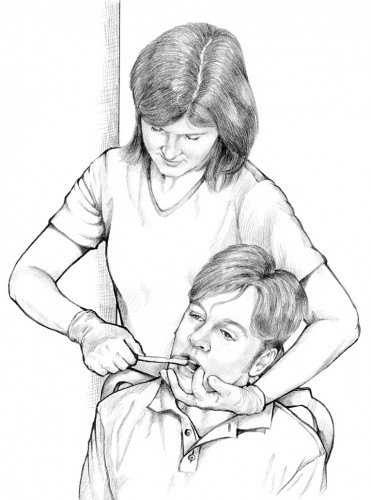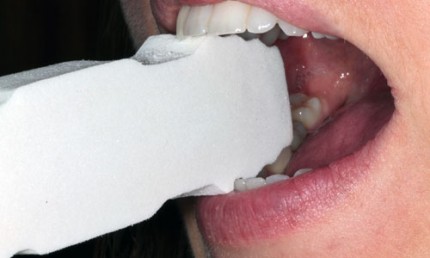Oral Care for the Elderly Patient- Techniques for the Caregiver.
Caring for a senior’s mouth is difficult when there are so many changes that affect the state of their oral health. There are over 400 medications noted to cause xerostomia, also known as dry mouth, and changes in a seniors mouth that lead to some devastating effects to the teeth, such as the increase in decay.
When it comes to doing the most basic toothbrushing, it can be difficult to position yourself and be effective. Where do you stand? how to hold the brush? how do you position the senior?
Here are some tips and techniques that work well for seniors in any situation.
Positioning Placing yourself
– place yourself comfortably behind the senior, if you are standing then place feet at shoulder width apart and bend at the hips if necessary, don’t slouch or lean at an awkward stance or you will be at risk of developing skeletal-muscular problems. If the senior is too low, sit yourself in a chair behind the senior to avoid too much bending.


Placing the senior
– have them sitting in a chair or wheelchair, adjusting them so that you are doing the least amount of bending. In-front of a sink will allow for the senior to be able to spit. Oral hygiene doesn’t have to be done in front of the sink, so using a towel on the senior’s chest will help to keep their front clean.
Hand placement
– Place your hand below the seniors chin, holding and supporting their head in your arm, use your thumb to open the mouth by placing it in the vestibule ( this is inside the mouth between the lip and gums) and gently apply pressure to the lower lip to open the mouth. Having good head control will allow you to position the senior where you need them to be.
– If you are able to have the senior grasp the toothbrush then place your hand over the patients and guide them to brush their teeth.
Tools for oral hygiene
Soft toothbrush or electric toothbrush Both are senior specific and as long as it is easily held and controlled there is no “best” toothbrush, as long as it is soft.
Fluoride gel, Neutral Fluoride 1.1% It is not recommended to use fluoride toothpaste, because it foams easily, and is hard to spit for the elderly. It also has 1/5 , .22 % , of the amount of fluoride than in topically applied fluoride which has 1.1%. Fluoride gel does not need to be applied more than a smear to be more effective in cavity reduction than toothpaste applied in the same amount.
Floss Floss holders allow you to floss the senior’s mouth, without getting your fingers caught inside, it also allows for better dexterity, and can be faster than flossing with fingers.
Other oral hygiene aids.
Mouth props– help keep the mouth open during brushing and are soft to avoid tissue trauma.
Warm facecloth– using your finger and a moist warm facecloth allows you to remove pouched food deep in the mouth, and provides a quick and easy way to remove heavy debris.
Swishing with water or fluoride mouthrinse– if all else fails simply having the senior swish with water or fluoride mouthrinse, will loosen plaque and food.
Conclusion
Do what comes naturally, if you don’t feel comfortable ask for support, and enlist someone to help provide distraction and/or talk to the senior about the importance of oral hygiene. It might not be the right time of day, so maybe try at different time of the day to establish routine. You know the personalities of the senior and sometimes they will relate better with another family member,care aid or nurse, don’t take it personally. Routines will work once they are established.

